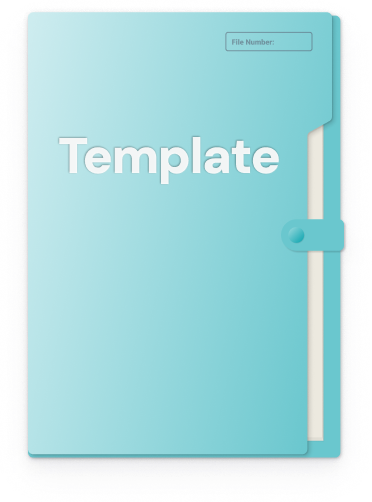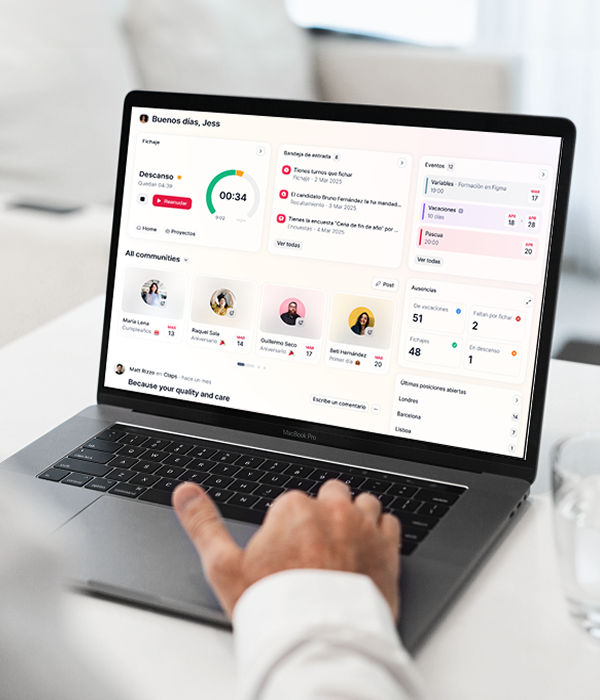It’s not uncommon for organisations to focus on the onboarding process when they have a new employee join their business, and forget about the team members that leave. But the offboarding process is just as important as onboarding – and can have a serious effect on your employer brand.
So let’s dive into what offboarding is, the benefits of an effective offboarding process and how to offboard departing employees effectively. Plus, take advantage of Factorial’s free employee offboarding checklist so you can hit the ground running with your offboarding process.
What is Offboarding?
Offboarding is the separation process between your organisation and a departing employee. An offboarding process should be used when team members leave voluntarily and if they are made redundant. Think of it as tying up the loose ends between an individual and the company once an employee resigns, so there’s a smooth transition for other employees, human resources and the leaving employee.
Organisations tend to forget about offboarding and just focus on onboarding their new team members, but both onboarding and offboarding are important for improving morale among current staff and for maintaining good relationships with former employees. In fact, research by Wiley Edge found that 71% of businesses don’t have an offboarding process that enables good relationships with departing employees, which could lead to issues like legal threats and compensation disputes if the outgoing employee hasn’t had a chance to voice any problems before they leave.
So, we can see that offboarding sounds like a good thing – but why is offboarding important? Let’s take a look at the benefits.
Benefits of Offboarding
Helps with knowledge transfer
One of the best things about having an effective employee offboarding process is that it gives you the opportunity to harness the leaving employee’s knowledge. Use an exit interview to find out about all the systems and critical processes that your outgoing team member knows about, and ensure that there are other individuals that can take on the most important tasks from the former employee’s role until you rehire.
Maintains a positive relationship with the leaving employee
Offboarding employees in a respectful manner helps you maintain a good relationship with them. If they have a positive offboarding experience, they’re more likely to become boomerang job applicants – where a former employee applies for another job with your company soon after leaving. Since the pandemic, 20% of workers who left their job have returned to their old employer, and 28% of all external hires are boomerangs who had previously resigned within the last 36 months.
Boomerang employees are great for organisations. When they come back they have fewer training needs as they’ll remember some of your processes, and you already know that they’re great to have on your team. Plus, they’ll probably come back as a more experienced team member, so you benefit from another employer training them for you!
A successful offboarding process can help you take advantage of boomerang employees who could be very valuable to your organisation.
Improve morale and retention
It might seem odd to think of offboarding as improving morale and retention. Surely it’s your onboarding process that would improve your company culture! But when current team members see their organisation treating an exiting employee with respect and fairness, they’re more likely to feel valued.
Research by Aberdeen found that businesses with a well-structured offboarding process retained 71% of their employees, and 44% of employees are rated ‘highly engaged’. Organisations with no offboarding process retained 57% of their employees and just 33% of them were highly engaged, so it shows how a good offboarding process can improve morale and retention, and therefore improve your employer brand.
Prevent security risks
If you don’t have a good offboarding process in place, you could pose risks to company property and data. Ensuring that you revoke access to your employee’s accounts when they leave stops any data leaks, whether accidental or deliberate.
Following an offboarding process also ensures that you recover company equipment, which can be difficult if your team works remotely and you don’t have a process in place. Over time, your departing employee might have acquired company assets like laptops, mobile phones, key passes and company credit cards, so it’s worth having a process in place to ensure you get them back.

Mitigate risks of legal issues
Conducting exit interviews and following an offboarding procedure can help reduce legal threats on an employee’s departure. It helps you treat all individuals fairly and gives you the opportunity to address any issues that the outgoing team member has before they progress any further.
Following specific offboarding procedures will ensure that you fill out all the paperwork required, such as tax documents and final pay summaries, so the employee can go into their new job knowing that everything has been wrapped up and their final payroll has been submitted to ensure they get paid correctly.
The Cost of Not Having an Offboarding Process
Without a structured offboarding process, companies leave themselves open to several risks across operations, finance, culture, compliance, and security.
- Loss of knowledge and productivity – without a detailed handover and a plan for how tasks will be completed, there is a risk of missing deadlines and not delivering as expected, as well as overloading remaining team members, which can reduce morale and productivity.
- Increased recruitment and training costs – a poor offboarding experience can damage a business’s reputation, making it harder to recruit the right people into the roles. There can be a financial impact, including increased recruitment and training costs, if candidates do not have the required skill set.
- Legal, compliance, and security risks – if statutory obligations, such as P45 and payroll documentation, are missed for departing employees, the business can face a costly legal claim. A standardised offboarding process also ensures that personal data is not mishandled or that access to sensitive accounts and systems is not forgotten. Data breaches, GDPR violations, loss of confidential information, and misuse of accounts can all be incredibly costly in terms of finance and reputation.
- Decline in team engagement and morale – remaining employees watch how departing colleagues are treated, so a poorly handled offboarding process can significantly erode trust, increase turnover, and lower motivation.
- Operational disruption and damage to external relationships – without a structured offboarding process, it’s easier to experience confusion about who is doing what in terms of workload and expectations for the departing employee, including returning equipment and providing feedback. Not only can these issues create problems internally for business operations, but they can also significantly damage customer and client relationships through communication gaps, missed deadlines, and poor-quality work.
How to Carry Out Offboarding Effectively
It might sound like there’s a lot at stake with employee offboarding, but it’s actually pretty simple when you break it down into steps. Here are our top tips for carrying out the employee offboarding process effectively:
1. Collect initial information and documentation
Firstly, make sure that your departing team member has given you a formal letter of resignation. This needs to be signed and dated, and include when their last working day is.
Once you have that, your HR department can review all the documents that your employee has read and signed during their time with your organisation, and check the employee’s contract to ensure that you and the individual have met all of their obligations.
2. Inform the accounts department
This step in the resignation process is crucial. Inform your accounting team so they can prepare the relevant paperwork, including tax documents like a P45 and calculate holiday pay entitlement. They will make sure that your resigning team member’s final pay is correct.
3. Announce your team member’s departure
Try to get ahead of any gossip around the office by informing other employees about the individual’s departure as soon as possible. You should tell the team member’s direct reports and anyone else that will be majorly impacted by the departure first, then let the rest of your company know after that.
It’s a good idea to tell the team at least one and a half weeks before the employee leaves, but since most employees’ notice period will be at least 4 weeks, we’d recommend doing it sooner. This gives everyone time to process the change and also gives other employees and team members a chance to come to you with concerns about the employee leaving – for example if they’re worried that their workload will increase or that they won’t get the support they need.
The leaving team member will appreciate it if you ask them how they would like the organisation to tell everyone the news. While some might like a formal announcement made in a team meeting, others might prefer a simple email that helps keep their exit a little more on the down-low.
4. Plan handovers
Don’t leave all the knowledge transfer to the exit interview in case you run out of time in the meeting or the team member refuses to have one. Ask your leaving employee to compile a handover and plan a time to go through it with them. Make sure you invite any relevant team members that will need to take over the reins to join you.
A good handover should include:
- Key tasks that the employee completes every day or very regularly.
- The status of any existing projects and what can be done to complete them.
- An idea of who could take over tasks in the interim.
- Information for a new employee entering the role.
5. Begin collecting company equipment
Your departing employee has probably acquired a lot of company property during their time with your organisation, especially if they are a senior member of staff or have been with you for a long time. While some property like laptops and mobile phones may be needed right up until the day the employee leaves, other things like uniform or keys might be able to be returned sooner.
Reminding your team member that they have property to return is a good idea so they can start putting it all together to hand back. It’s a good idea to keep logs of company equipment that you hand out so you can give a list to the departing employee with everything they need to return.
6. Conduct an exit interview
Exit interviews are a great way to find out about your employee’s experience with your company. Ask them about the good and bad parts of working for your organisation, their opinions on the management team and whether they would consider working with you again. You can gather a great deal of information on how your business can improve from an exit interview.
Exit interviews are the final chance for you to make a good impression on soon-to-be former employees. Show that you care about improving company systems and ways of working, and your former employees could end up becoming future employees again if a suitable role comes up in the future.
7. Remove employee access to company accounts
It doesn’t matter how much you trust your former employee – make sure you ask your IT department to revoke access to all their accounts. They shouldn’t have access to company accounts, emails, the company website, social media accounts or any other databases after the employee leaves. Forgetting this crucial step could leave you open to data breaches.
8. Say goodbye
It’s a good idea to say a fond farewell to your departing team member. However you decide to do it, you should show that you’re thankful for the employee’s time at your organisation and that you value their contribution to your business’ success.
You could give the leaving team member a gift or send around a card for everyone to sign, and if you’re feeling particularly generous you could throw them a party! Showing that you value them as a person leaves a positive impression on both the leaver and the existing team.

9. Follow up
Keep in touch with your former employees. As we mentioned earlier, boomerang employees are becoming more and more common, so maintaining a good relationship with former team members could help you fill a skills gap later on.
Don’t hassle them – they wanted to leave your organisation after all! – but a message every now and again on LinkedIn asking how they’re getting on is sure to be appreciated.
10. Compile an offboarding checklist
There’s a lot to remember here, and it can soon become overwhelming. Compile a checklist of all the tasks you need to complete during the offboarding process so you don’t forget any crucial steps. Not got much time? Use Factorial’s free offboarding checklist to get started.
Offboarding Remotely
Offboarding remotely is tricky, and we’d always recommend doing it face-to-face if you can. But with more and more teams becoming 100% remote, we know this isn’t always possible. Here are our tips for successful offboarding in a remote environment:
- Create an offboarding schedule so the team member knows what to expect and when
- Send a farewell package to the employee and arrange for free shipping or pickup for any equipment they need to return
- Use software that helps compile digital signatures and keeps documents in one place
- Try to schedule an exit interview over a video call to make it more personal than a written survey
Remote offboarding isn’t impossible; you might just have to think more carefully about the process to ensure you don’t forget anything. That’s where a checklist can really come in handy.
Best Practices for Remote Offboarding
Getting offboarding right is vital for your business, no matter how your employees work. However, if you are offboarding a remote staff member, it’s a good idea to approach the process with even more care. Here are our best practice tips for remote offboarding:
- Start the process early. Provide written confirmation of essential details such as final working date, equipment return, and handover expectations as soon as you can, and schedule a dedicated online meeting to discuss expectations and timelines.
- Create a structured digital handover plan. Provide a template for documenting projects, passwords, and responsibilities that can be accessed remotely, and set up online meetings for knowledge sharing with the remaining team members.
- Keep communication consistent and predictable. Establish who will be handling the process and develop regular short phone calls to check in to reduce anxiety and identify any issues early.
- Ensure the secure return of equipment and maintain data protection practices – provide clear instructions on wiping and returning devices securely, arrange courier collection, and ensure access to tools and systems is disabled once the handover is complete. Use an IT checklist so nothing is missed.
- Use video technology and structured questions to conduct a thoughtful remote exit interview. Seeing each other online helps create a connection that invites open reflection from the departing colleague.
- Plan a proper send-off. Invite colleagues to a virtual farewell meeting and create a digital message board to recognise the employee’s contributions to the wider team.
- Use technology to streamline the process of remote offboarding – systems that automate workflows, track equipment and access rights, provide templates and centralise communication, ensure that nothing gets missed, and both employee and manager are supported through the offboarding process.
Offboarding Tools & Software
If you are offboarding remotely, digital tools and software systems like Factorial can support the process by providing templates, automating tasks such as calculating holiday pay and scheduling exit interviews, and prompting tasks linked to equipment return, handover processes, and communication.
Factorial’s free offboarding checklist is an example of how digital platforms can help organisations stay on top of the details and provide employees, their teams, and managers with a smooth offboarding experience.
Employee Offboarding Checklist
Download our free offboarding checklist to create a foolproof offboarding process. Our offboarding checklist includes:
- All the steps you should take to offboard an employee successfully
- Exit interview questions covering employee experience
- A comprehensive company equipment inventory list
Offboarding With Factorial
Factorial makes it easier to say goodbye to employees with a unified offboarding software to streamline the process. Keep your company and employee documents organised and centralised, collect digital signatures from remote team members and improve communication with a bespoke employee portal.
Improve your onboarding and offboarding processes with structured taskflows to help complete tasks on time and facilitate the exchange of responsibilities between teams throughout the employee lifecycle.
Start your 7-day free trial of Factorial now.
Offboarding Processes FAQs
What are the common offboarding mistakes to avoid?
Common offboarding mistakes include:
- Poor communication around departure dates and handovers.
- Leaving systems active and failing to collect in the company’s equipment.
- Rushing the process so tasks are not completely handed over or wrapped up.
- Avoiding exit interviews and losing valuable feedback.
- Not insisting on handover documents, leading to knowledge loss and disrupted workflows.
- Treating departing employees badly causes damage to the company’s brand.
How can offboarding impact employee morale?
The offboarding process directly affects employee morale because remaining team members observe how their departing colleague is treated. When they see a respectful, thoughtful process, they trust the organisation more and can see that it values its employees at every stage of their journey with the company. However, a chaotic or insensitive approach to offboarding can create anxiety, reduce trust, increase turnover, and lower engagement.
What documents are essential for a successful offboarding?
Essential offboarding documents for a smooth transition and to meet legal compliance requirements include:
- Resignation acceptance letter or termination confirmation
- Final payslip information, including outstanding holiday pay
- P45 form
- Contract and benefits summaries, including pension details
- Equipment return checklist
- Handover notes
- Post-employment restriction reminders
- Exit interview form
- Offboarding checklist for HR and managers
How do I conduct an effective exit interview?
Conducting an effective exit interview involves some planning:
- Schedule it in advance
- Ensure privacy
- Explain the purpose: not to challenge the decision to leave, but to understand the employee’s experience
- Use open questions
- Listen actively and without defensiveness
- Capture themes rather than individual comments
- End by thanking the employee for their contributions and their feedback
Is remote offboarding different from in-person offboarding?
Remote offboarding has the same core stages as in-person offboarding, but it does require extra planning and more structure to avoid missing anything. Communication with departing employees needs to be even clearer than in person to minimise potential misunderstandings. Video calls need to be used to maintain the human connection where possible and systems need to be in place for switching off access quickly and coordinating equipment returns.



